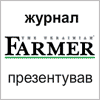Inflation slowed down in February 2024 in Ukraine

In February 2024, consumer inflation declined in annual terms to 4.3% (down from 4.7% in January). In monthly terms, prices grew by 0.3%. This is according to data published by the State Statistics Service of Ukraine.
The actual rates of price growth were below the trajectory of the NBU’s forecast published in the January 2024 Inflation Report. Raw food products became cheaper. Prices for fuel, alcoholic beverages, and tobacco products grew at lower rates. Meanwhile, underlying inflationary pressures, as reflected in core inflation, also eased in February, although less notably than the NBU had expected. This was due, among other things, to the effects of the western borders blockade, which nudged the prices of certain food and nonfood products higher. Prices also gave in to upward pressure from the gradual increase in wages amid a personnel shortage in the labour market.
Raw food prices declined by 0.3% yoy
Egg prices declined significantly year-on-year thanks to increased production and producers’ reorientation to the domestic market. The effects of last year’s ample harvests supported the further decline in the prices of sugar, cereals, and flour. Prices for greenhouse produce, tomatoes, and cucumbers in particular, decreased. The growth in meat prices, including pork and poultry, decelerated. Thanks to warm weather and an uptick in sales from warehouse stocks, prices for some of the vegetables used in cooking borscht increased more slowly. By contrast, the prices of potatoes and apples remained high due to the limited supply of quality products. The growth in raw milk prices accelerated slightly as supply of imported products contracted.
Growth in administered prices slowed to 10.1% yoy
The prices of alcoholic beverages and tobacco products continued to rise more slowly due to lower pressure from production costs and pressure from illegal products.
The moratorium on raising utility prices for households continued to restrain the increase in administered prices. In contrast, prices for pharmaceuticals grew more quickly.
Fuel prices were up 5.0% yoy
Fuel prices resumed growth in February. This was primarily driven by supply chain disruptions, which mainly affected the prices of LPG, and by the rise in global crude oil prices.
Core inflation declined to 4.5% yoy
Price increases for processed foods accelerated slightly (to 5.6% yoy). Specifically, dairy products rose in price faster. This may have been the result of the border blockade, which led to a decrease in supply of imported products, additional logistical costs, and shorter sales periods for these goods. Long-shelf-life goods, such as coffee, tea, and culinary herbs, also became more expensive at a faster pace. At the same time, prices for bread, flour and confectionary products grew more slowly. Although the decline in prices for sunflower oil continued, the increase in the prices of sunflower oil-based products accelerated.
Nonfood prices continued to decline (down 0.5% yoy), primarily due to a steeper fall in prices for clothing and footwear. Concurrently, prices for other nonfood products grew more slowly than in January, which is attributable, among other things, to the fact that the FX market situation remained under control.
The pace of growth in services prices decreased to 9.8% yoy in February, primarily due to eased pressure from foods and energy prices. Specifically, price increases decelerated for certain healthcare, transport, telecommunication, insurance, movie-theater, and other services. In the meantime, prices for financial and personal care services increased, as did the cost of operating own vehicles, in part due to pressure from labour costs.
In February, inflation decelerated faster than forecast. Such dynamics were driven by an increase in supply of certain food products, second-round effects from strong harvests, controlled conditions in the FX market, and the sustained moratorium on increases in utility tariffs. At the same time, core inflation decreased more slowly than projected under the pressure from a contraction in the import supply of certain goods and an increase in labour costs.
Better-than-expected inflation developments and favourable FX market conditions are creating prerequisites for a loosening of the interest rate policy. However, the NBU should proceed with caution, as risks of elevated inflationary pressure persist, fueled primarily by the impact of the war. The NBU will keep pursuing the policy aimed at maintaining moderate inflation.
IC UAC according to the NBU
- 1275 reads








